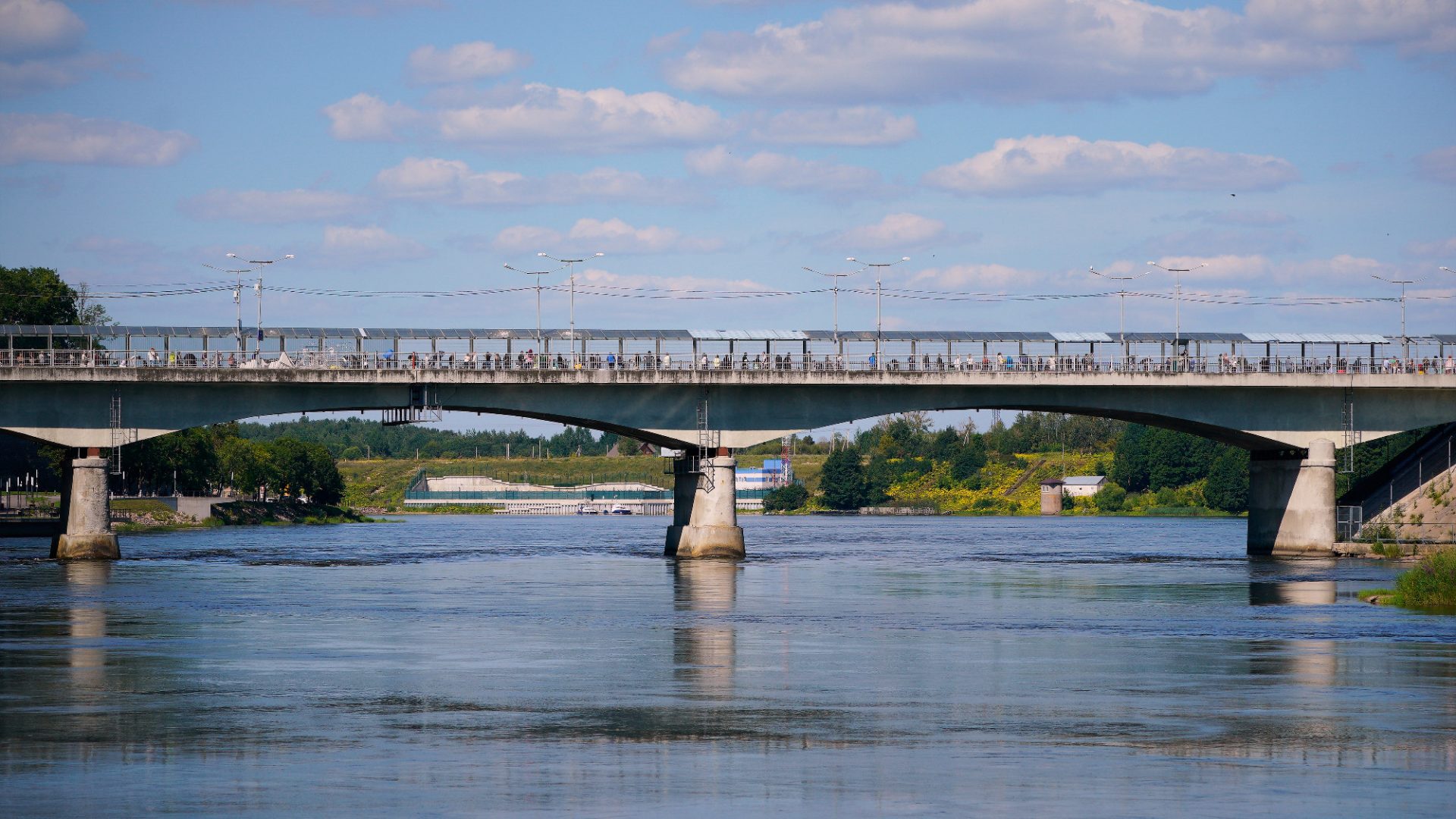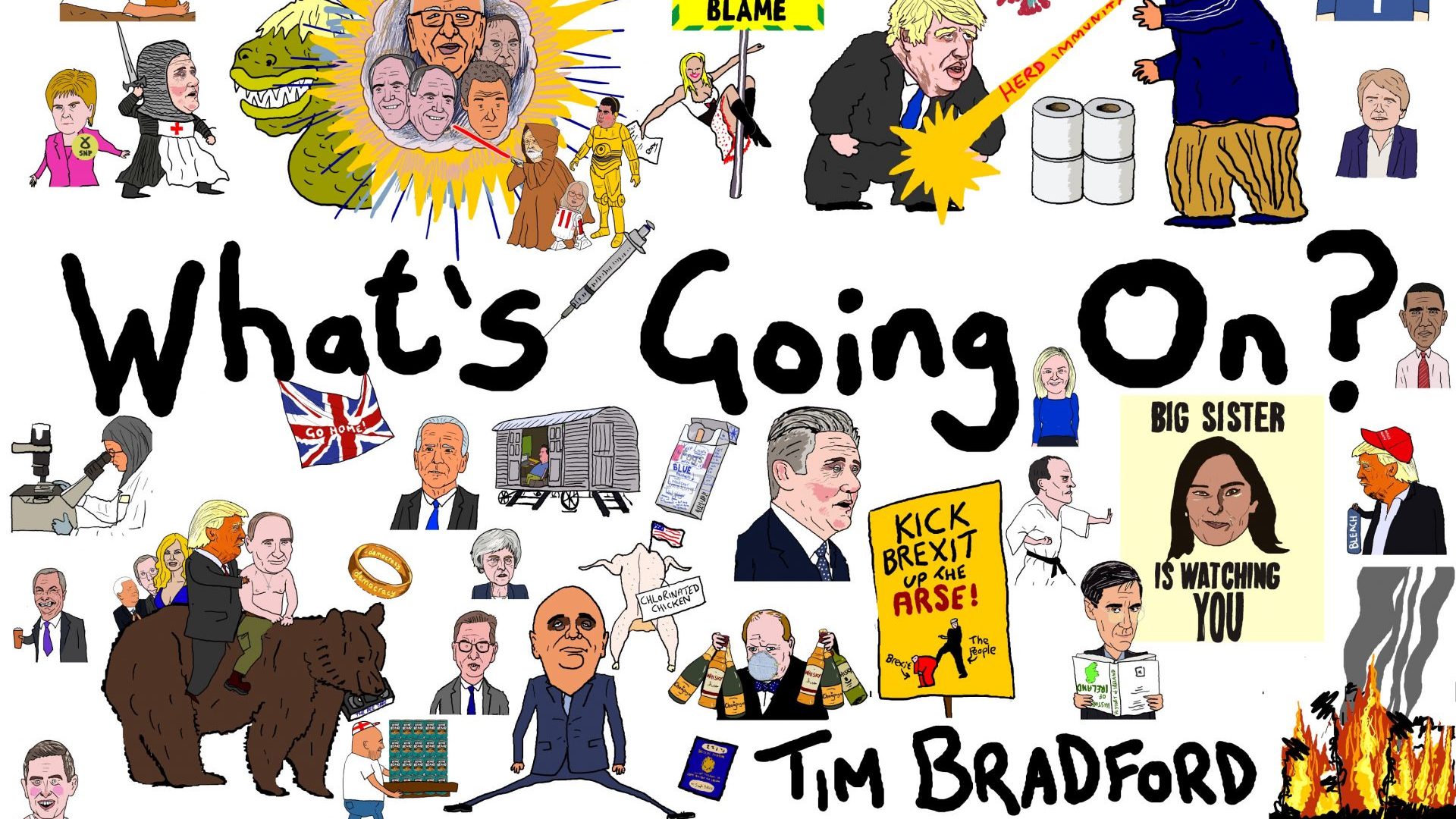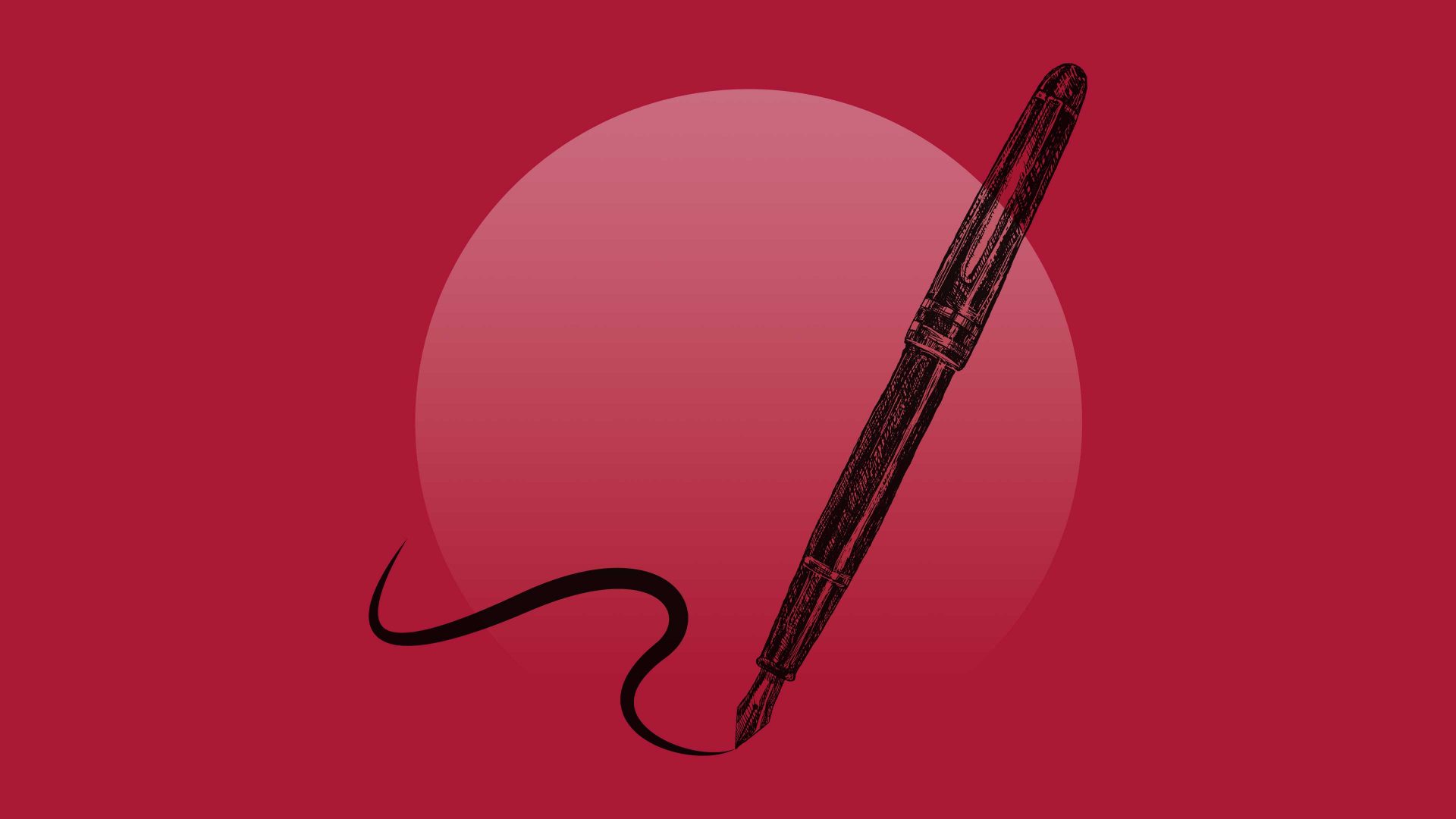The number 20 from Tallinn is a striking, bright orange train that glides with a modern poise across increasingly snow-piled woods and fields, reliably averaging speeds of 115km. Winter won’t stop it. In around two hours it connects Estonia’s capital to its third-largest city.
In truth, the distance feels wholly disproportionate. Rather than a couple of hours, it feels more like a time passage of 50 years.
Walk out of the classic Soviet train station in Narva, and you see one abandoned building after another. In Tallinn, there’s a popular Ukrainian restaurant and a Ukrainian Symbols Shop. Ukrainian flags float from official buildings and businesses in the capital, but there are fewer out here, in the far north-east. Tallinn’s fairytale old town and Copenhagen-style newbuilds are a distant memory. It is oddly quiet, with few people around, a dearth of bars and cafes, and only the seagulls and the occasional sound of snow being cleared making up a rather haunting soundtrack.
The Estonian city of Narva is right on the edge of Europe. Only a 162-metre concrete bridge over the Narva River separates it from Russia. Along a promenade men fish and older folk stroll, while Russia stares back at them.
In 2022, Vladimir Putin made his territorial feelings towards Estonia clear, by claiming that the Russian tsar Peter I, who had conquered the country in 1710, actually just “took it back” – a threatening interpretation that ignores Estonian sovereignty. And if he decided Estonia should be “taken back” once more, Narva is the obvious place to do it.
With its squat train station and tower blocks, Narva looks Soviet – it was almost entirely destroyed in the second world war and was hastily rebuilt by the Soviet occupiers who annexed Estonia in 1940.
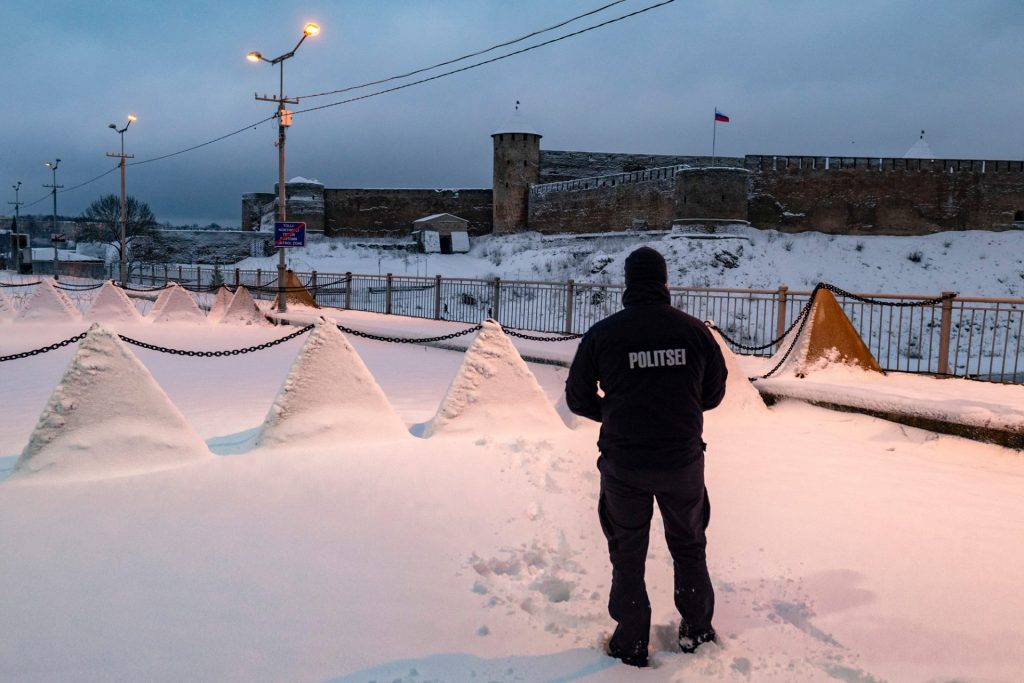
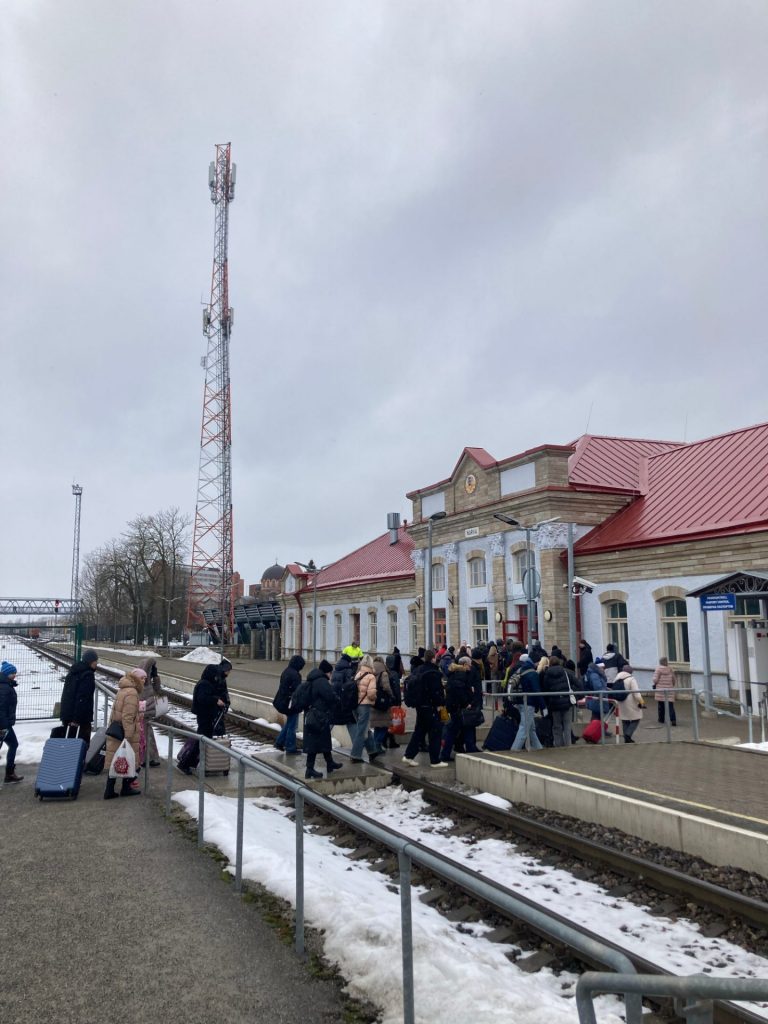
It was also repopulated by ethnic Russians, sent over from across the USSR. This Sovietisation “substantially erased Narva’s ‘Estonianness’ and replaced its Estonian population with Russian-speaking Soviet citizens,” explains the academic David J Trimbach, who has written extensively on borderland areas and conducted surveys on identity in Narva specifically. After Estonia fought for and gained independence in 1991, some of the city’s leaders remained sympathetic to the Soviets and their successors.
Nowadays the city is over 90% Russian speaking, and many of these residents do not speak Estonian. Some are Russian passport holders (about a third), though most are Estonian citizens (about half), and the remainder are stateless – refugees or Russian exiles. As such, Narva is a complex web of identities.
“Everyone has different opinions on the war (in Ukraine),” explains Anastasia, a smiley teenage girl who works at Narva Art Residency. “Some of them just live their life, but also there are a lot of people who try to support and help, and there are others who say: ‘Why are we doing this? We’re wasting a lot of money. Why don’t we spend it in Estonia?’
“I can understand them because Estonia gives a lot of money to Ukraine but meanwhile we aren’t making our own country better.” Estonia has provided military assistance to Ukraine worth nearly €500m, around 1.4% of GDP.
Narva is something of a left-behind city: the unemployment rate is more than double the national average – 12.4% to 5.1%, its economy previously being based on the textile industry and mining. Its population is shrinking: in 1992 there were 83,000 inhabitants. Now there are fewer than 60,000. North-eastern Estonia is subject to “long-standing structural disadvantage”, according to a recent Europa report.
The war has made things worse. Tourism with Russia has dried up and many trade links have been cut. Only pedestrians with visas can cross the bridge, and the visas have become difficult and expensive to obtain since the war complicated relations between the two countries. Estonia does not allow dual citizenship. It’s an intentional decision that says: you have to choose a side. Anastasia says some people support Russia, some are indifferent, while others are very supportive of Ukraine.
The day of my visit is just two days after the explosive White House press conference where Donald Trump and vice-president JD Vance bullied the Ukrainian president, Volodymyr Zelensky. Estonia is passionately pro-Ukraine, partly because, along with their Baltic neighbours, they fear they are next in line. It seems clear they would not be able to rely on the US despite their Nato membership.
In Tallinn, Ukrainian flags had unfurled out of many windows by the following morning, so outraged and sickened were people by the US’s abandonment of Ukraine and Europe. One man told me that what particularly hurt was the use of Zelensky’s poor English against him. The mood is decidedly anxious and subdued. I count three flags in a day spent wandering around Narva. The mood isn’t anxious, rather determined indifference.
Emerging from the medieval castle, built in the 1200s under the Danish empire, I see a queue of bundled-up people with furry hoods and suitcases in a grim square under a sign that reads “border check”. “I am going to Russia,” one woman tells me, in broken English and not particularly keen to talk.
Katri Raik, the mayor of Narva, says: “When the invasion began, there was a tense silence in the city, nobody spoke about it.” Meanwhile the Estonian government’s efforts to curb Russian influence – banning TV channels, phasing out Russian language schools – has been controversial.
At the beginning of this year, one opposition party proposed closing the border with Russia. Raik dismissed that idea, suggesting it would be harmful for Narvans.
It is mainly Finns – whose border with Russia was closed last January – and people with Russian citizenship who cross the foreboding bridge with its frequent vehicle blockades and austere border points. The concrete and metal provide a strange contrast with the twin stone medieval forts that tower over them on either side.
“Russian citizens living in Estonia are also our people,” Raik says. “They could not renounce their Russian citizenship even if they really wanted to. Leaving them completely without help, without information, without the necessary documents, we cannot afford to do that.”
In Trimbach’s survey from 2019, most residents identified as Narvan over Estonian. Describing their hometown, the majority chose the word unique.
“I am Estonian,” one man tells me defiantly, when I ask him where he is from. Another person I speak to suggests that people in Narva are more patriotic Estonian citizens than the Russian-speaking minority in Tallinn, because of their proximity to Russia, and their visceral knowledge of restrictions on free speech, the threat of conscription to the army for men, a ban on homosexuality.
“The Estonian state and media discourse tends to construct Estonia’s north-eastern borderland and borderland city of Narva as a national security problem, rife with local crime, cross-border illegality, a landscape of industrial decline, and political instability,” writes Trimbach. But such representation can be offensive.
The problem, as the government sees it, is that many people grow up speaking only Russian, attend Russian-speaking schools, and never fully integrate into Estonian society. As such, some people find ways to watch Russian television – regarded as more entertaining than Estonian TV – even though these channels were banned in 2022.
Russian propaganda circulates in Estonia via apps like Signal as well as Russian television: for example, the myths about Ukrainian atrocities or the presence of Nazis in the Estonian government – a lie directly propagated by the Russian foreign ministry alongside its similar claims about the Ukrainian government. The Russian-language channel ETV+ was set up in 2015. “If we don’t speak to [Russian-speaking Estonians] then Russia will instead,” says its editor, Artur Tooman. “And, as we know, Russian TV very often uses false information, and when misinformation builds up in a country, it can lead to war.”
The website Propastop was set up in 2018 to counter Russian propaganda. It is run by anonymous volunteers, many of whom belong to the Estonian Defence League, a voluntary organisation that lies under the Ministry of Defence.
Among the Estonian-speaking majority in Tallinn, I find both sympathy and frustration over the plight of Estonian Russian speakers. Many don’t speak Estonian because they attended Russian-language schools, a relic of the Soviet-era two-language education system.
The invasion of Ukraine gave the country the impetus to phase these schools out. But it’s tough: it had to replace 15% of teachers in the education system, because their Estonian wasn’t good enough.
The government has also had to encourage teachers to move to Russian-speaking areas of north-east Estonia by increasing salaries in those areas by 50%.
“This should have happened 30 years ago,” one foreign aid sector worker tells me. “But if not, then now is the time.” The hope is to integrate Russian-speaking citizens into the Estonian mainstream, without alienating them in the process.
Right now, there is a sense that the two distinct groups operate in silos. In Tallinn, many Russian speakers live in the same area, Rotermann, which is – suitably – the most Soviet-looking area of a not-especially-Soviet-looking city. “I don’t have many Russian-speaking friends,” one well-travelled young Estonian confesses, over a flat white in a trendy coffee shop.
In Narva, Anastasia dreams of returning to Russia. “I went to Saint Petersburg when I was around 10,” she says. “It was amazing, such a beautiful city… and I loved the circus.”
“I wish I could go to Russia,” she sighs. “There’s a lot of cool things I’d like to do there. One day, I hope that this all ends and we can go to Russia because it’s a really nice country.” She pauses. “Except for the politics.”
Lucy Kenningham is a freelance features writer from London with interests including international affairs, urban life and the arts

